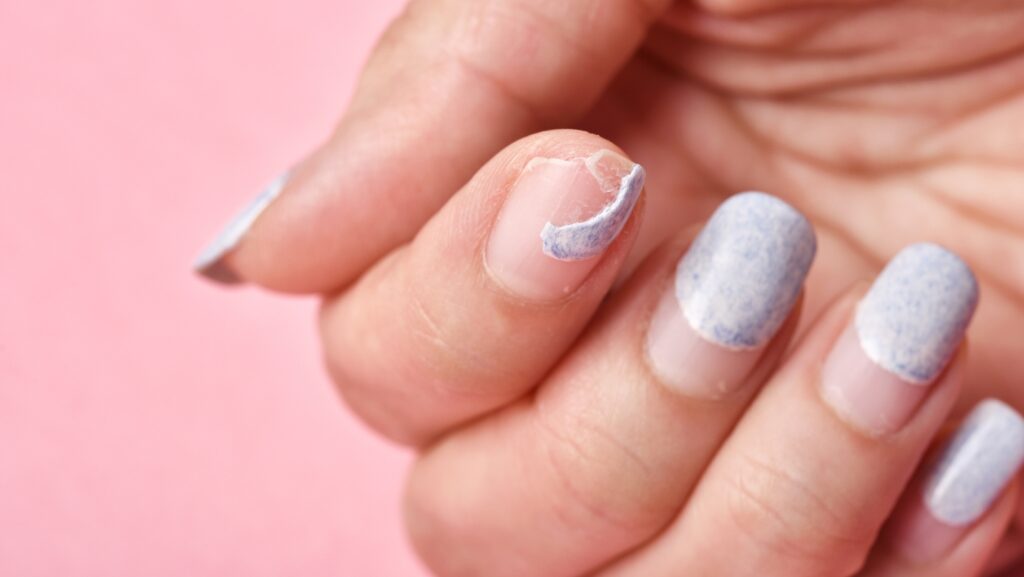When your acrylic nail rips off your real nail, it can be a painful and alarming experience. However, there are steps you can take to address this issue and minimize further damage. Here’s what to do when your acrylic nail unexpectedly tears away from your natural nail.
Table of Contents
ToggleFirst, assess the damage and determine the extent of the injury. If there is bleeding or severe pain, it’s important to seek medical attention immediately. Otherwise, gently clean the affected area with mild soap and warm water to prevent infection.
Next, trim any loose or jagged edges of the torn acrylic nail using sanitized nail clippers. Be careful not to cut into your natural nail bed. If possible, try to salvage as much of your natural nail as you can by carefully removing any remaining pieces of acrylic.
Afterward, apply an antiseptic ointment on the exposed area to promote healing and prevent infection. It’s also advisable to keep the damaged nail protected by covering it with a bandage or adhesive tape until it fully recovers.
Signs of a Ripped Acrylic Nail
When your acrylic nail rips off your real nail, it can be quite distressing. It’s important to recognize the signs of a ripped acrylic nail so that you can take appropriate action to address the issue and prevent further damage. Here are some key indicators to look out for:
- Pain or Discomfort: One of the first signs that your acrylic nail has ripped off is pain or discomfort around your natural nail bed. You may experience throbbing, sensitivity, or even sharp pain in the area where the acrylic separated from your real nail.
- Visible Gap: Another obvious sign is a visible gap between the torn acrylic nail and your underlying natural nail. This gap occurs when the adhesive bond between the two surfaces breaks, leaving behind an unsightly space.
- Exposed Nail Bed: If you notice any part of your natural nail bed being exposed due to the ripped-off acrylic, it’s crucial to take immediate action. The exposed area can be vulnerable to infection and further damage if not properly cared for.
- Bleeding or Swelling: In more severe cases, a ripped acrylic nail may cause bleeding or swelling around the affected area. This could be an indication that not only has the artificial extension come off but also that there might have been some trauma caused to your natural nail in the process.
- Sensitivity to Temperature Changes: Some individuals may experience heightened sensitivity in their nails after an acrylic extension tears off. You might notice increased discomfort when exposed to hot or cold temperatures due to temporary changes in nerve endings.
If you observe any of these signs, it’s essential not to ignore them and seek proper care and attention for your damaged nails as soon as possible.

What to Do When Your Acrylic Nail Rips Off Your Real Nail
When your acrylic nail unexpectedly rips off, it can be a painful and alarming experience. However, there are immediate steps you can take to minimize discomfort and promote healing. Here’s what you should do when your acrylic nail tears off your real nail:
- Assess the damage: Take a moment to examine the affected area and determine the extent of the injury. If there is bleeding or severe pain, it’s advisable to seek medical attention.
- Cleanse the area: Gently wash your hands with mild soap and water to ensure cleanliness. Avoid using harsh chemicals or disinfectants directly on the exposed nail bed as they may cause further irritation.
- Control bleeding (if applicable): If there is any bleeding from the torn area, apply gentle pressure with a clean cloth or sterile gauze pad until it stops. Elevating your hand above heart level can also help reduce blood flow.
- Trim loose edges (optional): If there are any sharp or jagged edges on the torn acrylic nail, carefully trim them using sanitized nail clippers or scissors. Be cautious not to cut into the underlying real nail.
- Apply an antiseptic ointment: To prevent infection, apply a thin layer of over-the-counter antiseptic ointment, such as Neosporin, onto the exposed nail bed after ensuring that it’s dry.
- Protect with a bandage: Covering the ripped-off area with a sterile adhesive bandage can provide protection against dirt, bacteria, and further damage while promoting faster healing.
- Avoid unnecessary contact: Refrain from exposing the injured finger to excessive moisture or substances that could irritate or infect it further, such as soapy water or harsh cleaning chemicals.
- Seek professional help (if necessary): If you experience persistent pain, signs of infection (such as redness, swelling, pus), or if a significant portion of your natural nail is affected, consult a healthcare professional or a licensed nail technician for appropriate treatment.
Remember, these immediate steps are meant to provide temporary relief and reduce the risk of complications. It’s crucial to follow up with proper nail care and maintenance to ensure optimal healing and prevent future incidents.











